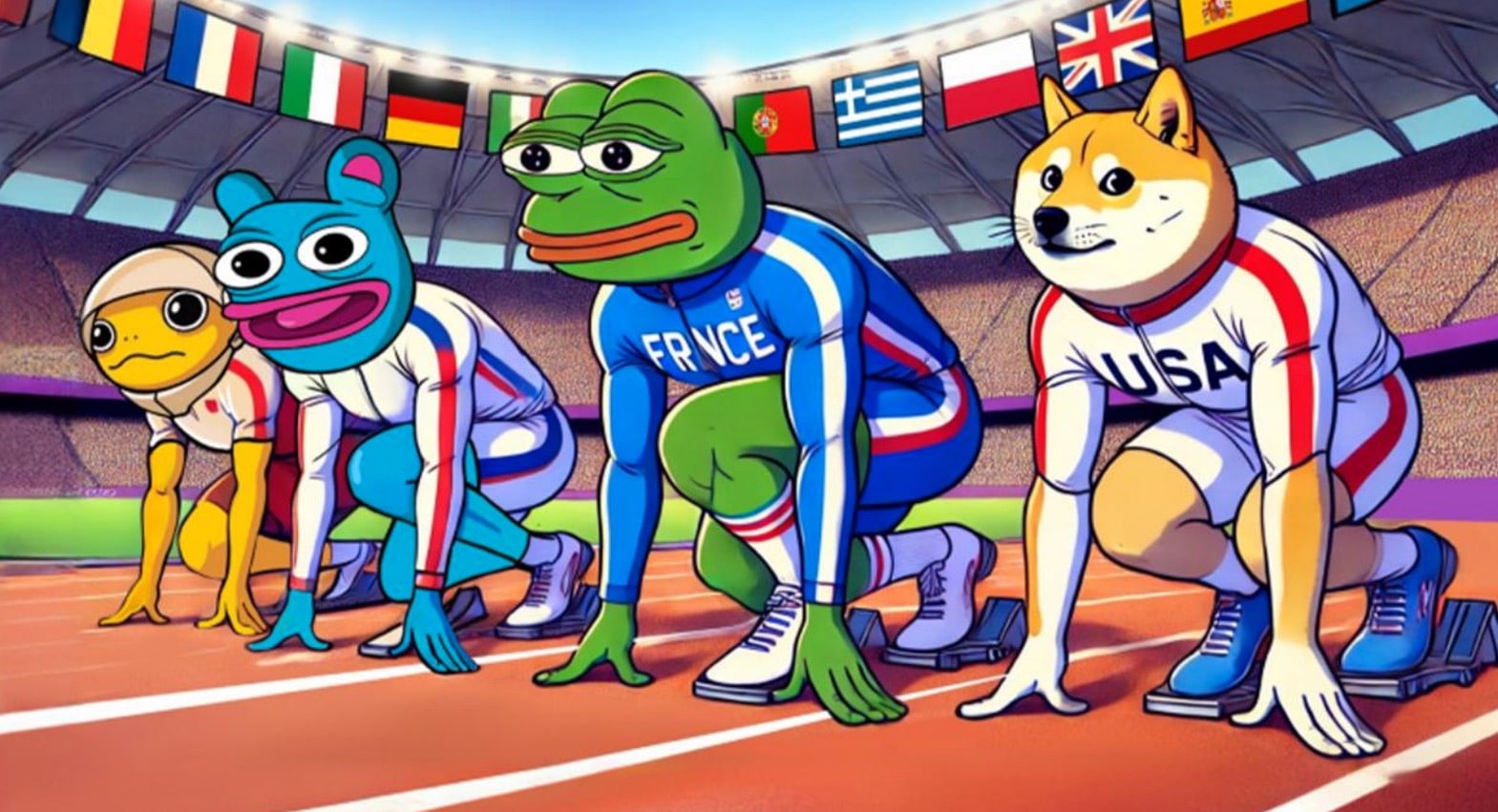RChain: 3 Lessons Web 3.0 Can’t Afford to Ignore

There’s a tendency in the tech world to toss out old tech and go all-in on a new replacement. “Oh, don’t use that. That’s the old thing! Use the new thing instead.” This advice is best suited to those who adapt quickly to technological change—in other words: a small percentage of humanity.
Jumping quickly to ‘the new thing’ may come with harmful second or third-order consequences for most people; this is especially true for energy-hungry technologies like cryptocurrencies that adversely affect our planet.
These technologies haven’t even reached a global scale yet, so humankind may only be seeing the beginning of what’s to come.
Despite the potential or actual costs of adoption, today’s technology innovators are racing toward revolutionary new ideas, like decentralization, scalable architectures, self-sovereign data, NFTs, and blockchains. RChain wholeheartedly and enthusiastically rejoices at the global excitement for these technological changes, and they are core to what Rchain is building.
But new tech needs to make life better for its users, especially when considering billions of users. One particular blind spot for innovators appears to be Web 3.0, the next evolution of the world wide web.
There are three lessons the blockchain hasn’t yet learned from Web 2.0 but should. Web 3.0 won’t succeed without:
- Advanced addressability.
- Decentralized advertising.
- The most powerful search mechanisms the world has ever seen.
Let’s look at how these solutions work today and how they can evolve for the meaningful adoption of Web3 by the global market.
Web 3.0 Needs to Improve Upon Web 2.0
If Web 3.0 is to be an advancement over Web 2.0, people should be able to quickly identify meaningful improvements to the key 2.0 features that made it such a powerful combination of technologies. Web 1.0 brought the world wide web and essential search functions. Web 2.0 was built on Web 1.0 and brought interactivity (e.g. social media and online communities), rich media experiences (e.g. streaming video and audio), and advanced search (e.g. in-media content and source code).
Quite significantly, Web 2.0 is backed by vast amounts of advertising revenue. Experts predict that the global advertising market will reach nearly $800B by 2026. Yet, where are the advertising solutions for Web 3.0? Who is building the next ad networks? And how to ensure they’re not created by the same people who made the surveillance ad networks today?
It is imperative to continue offering today’s impressive ad tech like real-time bidding auctions and behavioural targeting while giving users the choice to share and sell their data to advertisers. Though Rchain is firmly against many of the tactics used by Web 2.0 ad networks, the need and value of ad tech on the web are undeniable. A lot of questions pop up in mind:
- Where is Web 3.0 heading?
- Upon what will it be built?
- How is it advancing what people already have that makes the web work?
- What will interactivity, rich media experiences, and advanced search look like on Web 3.0?
It seems that not enough work is currently done to satisfy these questions, as, at the moment, Rchain cannot find meaningful answers to these questions. Rchain believes Web 3.0 proponents and innovators are throwing the Web 2.0 baby out with the bathwater. They are not advancing the fundamentals of the web itself that led to its adoption. They’ve completely forgotten how important the features of Web 2.0 are.
Web 3.0 Needs to Enable A Global Market
One of the most potent notions of the web today is the unified global market. Thanks to search engines like Google, Duck Duck Go, and Bing, anyone could quickly and easily look for what they wanted. Web 2.0 allowed any content to become searchable, and the results reflected that.
Today’s search engine results include content, references, agents, people, etc. Assets on the web became accessible to anyone in an instant. That enabled a global market.
The storage mechanisms for today’s web are simple: centralized file systems with clear bounded ownership. Anyone can store data on AWS S3, Google Drive, or even their private server hosted in a data centre or from their own home. Web 2.0 made storage reasonably ubiquitous.
The fully-realized Web 3.0 storage mechanism is the blockchain. Digital assets stored on a chain, or managed through a chain, become opaque to search engines. If there’s no ability to tag or otherwise look through data collected through the chain, there’s no way to search for it. If data is on IPFS, how can Google search the data’s contents? That’s a real challenge.
It is necessary to take a step forward going into Web 3.0 instead of regressing backwards. There is no global market without searchable, accessible data. The need is for much more than currency-enabling blockchains that keep primitive records of transactions.
Web 3.0 won’t be successful if it cannot offer or perpetuate a unified global market.
1. Web 3.0 Needs URLs, Not Addresses

The unified global market needs a way to locate data on the web. Blockchain-based web storage needs a usable URL system, as there always has been. But how should on-chain addressing work?
Almost nobody is addressing this.
Very few blockchains can support file storage, and almost none of them support files of any substantial size. Web 3.0’s storage mechanism can’t be a parallel system that supports (or smells like) a blockchain. The web needs to live on the blockchain itself. And for that to work, it requires addressability.
Chain files need to be found and retrieved. The location of resources needs to be a compositional structure, like the web’s current URI composition (URN + URL). It’s how browsers work, and it’s a great model for the future. But on-chain URI composition will need some re-thinking.
The Dappy browser is tackling blockchain addressing while also highlighting and fixing the limitations of DNS as it works today. Dappy’s website states: Dappy replaces the traditional DNS layer with a naming system executed on a blockchain platform. The lookups (when your client accesses the website) are resolved by a network of independent companies, a network collectively certifying the domain names and encryption certificates.
Please look at their name system documentation to understand how it works.
Though projects like Solid and IPFS are doing commendable work on the storage and sovereignty aspects of Web 3.0 data, users need to be able to locate and access data stored on the chain. Today’s URI composition can work, but it requires advances to function on a blockchain.
2. Web 3.0 Needs Digital Advertising at Scale

The world’s most popular Web 2.0 apps are free to use. TikTok, Facebook, Instagram, WhatsApp, Telegram, Snapchat, Zoom, Spotify—no paid subscription required. With hundreds of millions of users, they remain accessible by harvesting and selling their users’ data or advertising. How does this model evolve to operate on a decentralized web that runs on paid token exchanges and self-sovereign data?
It’s unclear how the big players will function on Web 3.0, but a decentralized architecture will not support their existing surveillance advertising models. Whether their apps stay free remains to be seen, and whether their users will pay for the apps is an even bigger question. Web 3.0 will force users to think about what information they share and potentially allow them to sell the data themselves.
The reality is that: Web 3.0 needs advertising even more than Web 2.0. Distributed apps (DApps) built on a decentralized web will have even worse paywall issues than today’s Web 2.0 apps. There’s only one way to solve this problem: decentralized advertising.
Decentralized advertising can run on a globally scalable sponsored content framework. It can function with a small set of APIs for both providers and developers. Online communities can have the option to allow advertisers to share sponsored content with them.
For example, a fly fishing community could vote and approve to signal that they’re open to relevant advertising content based on the data they provide about their community. The content framework could do the matchmaking and ensure the requested content is delivered. And because it’s all on a blockchain, the advertiser could know precisely how many times their ad was seen, by what communities and not have to worry about fraudulent advertising metrics.
There’s no escaping the need for ads in a Web3 world, but the capabilities for a better ad experience (for advertisers and users) have much greater potential for good.
3. Web 3.0 Needs to be Searchable

RChain has spent a lot of time working with visual and musical artists who’ve minted NFTs. They said, “I’ve minted the NFT. How do people find it?” That’s the search problem. How do artists connect with their audience if their material is on a chain?
Right now, if an NFT is built on Ethereum (ETH) and the Interplanetary File System (IPFS), it’s opaque. There’s no way to find it. IPFS is not a blockchain, yet it says it is “the hard drive for blockchain and Web 3.0.” It’s certainly a noble project for decentralized file storage. But if techies aren’t building searchability into Web 3.0 as a first-class citizen, how will it see global adoption?
The universal search for globally distributed resources has done more to create a global economy than virtually every other innovation combined. If resources are managed through blockchains and external paraphernalia like IPFS without deep search capabilities, this powerful force creating the global market is hindered; regressed.
File systems for Web 3.0 must be query-able but with much more capability than we have today.
For example, music’s objective properties can be indexed, like tempo, key, instrumentation, and more. Can someone find songs in the key of G without the song or the containing page being titled “songs in the key of G?” How about gipsy jazz songs between 125 and 135 beats per minute featuring a violin as the lead instrument?
Imagine a DJ planning an event who wants to create a specific contour for the evening. It starts relaxed with blue artwork that fits the interior design of the event being projected on the screens. Then intensity builds with faster music with more intense instrumentation, and the artwork turns green—the set peaks with complementary red artwork and uptempo, aggressive music.
And humans are not even close to making this possible with today’s contemplated NFT structure.
Web 3.0 has a significant opportunity to build upon and advance the search capabilities of Web 2.0. There’s immeasurable potential to index on actual, relevant metadata.
Web 3.0 Technology Is Available Today on RChain
The lessons of Web 2.0 are hugely important for Web 3.0. Here are the fundamental realities:
- On-chain data storage won’t reach global adoption if people can’t directly access it through a compositional address structure.
- Distributed apps cannot be free to use without decentralized advertising.
- The unified global market cannot persist without the universal search.
Technology already exists to make these realities possible. Unfortunately, today’s innovators appear to be more focused on making cryptocurrencies work (or making money from cryptocurrencies) instead of making Web 3.0 work. The team at Rchain thinks it’s more important to build a humane system that works for everyone, and it has spent the past several years developing it.
RChain is the only blockchain offering addressable file storage with a built-in transactional query language, Rholang. Rchain search capabilities make URLs, and query strings look like toys. And there’s the ability to store files of any size on a chain. Rchain offers a significant upgrade to the file storage and search features offered by Web 2.0.
The team at Rchain is so enthusiastic about the needs of Web 3.0 that they have launched two major projects to address the design shortcomings described in this article. RChain Publishing makes on-chain storage and self-sovereignty possible. DAASL offers a distributed advertising framework on a global scale.
The future of Web 3.0 is at risk if it doesn’t design around these essential Web 2.0 capabilities. Someone can’t use Web 2.0 search without integrating it into the blockchain, or they end up with content (e.g. NFTs) that can’t be located or found through search. Someone can’t offer accessible DApps without ads and sponsored online content.
The world will not want to use Web 3.0 if they have to pay for the privilege. A move to Web 3.0 should not feel like a loss to the general public. They expect better search, better and safer free apps, and an even better experience with the unified global market.
This is a sponsored post. Learn how to reach our audience here. Read disclaimer below.
Powered by WPeMatico







